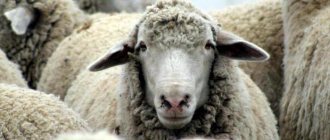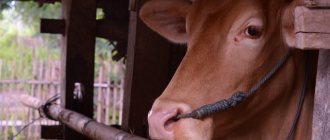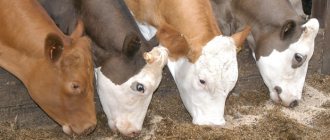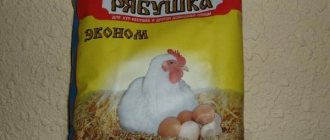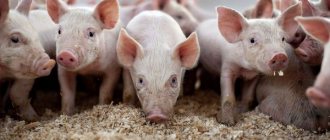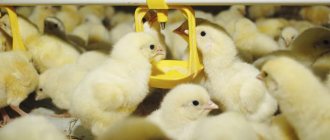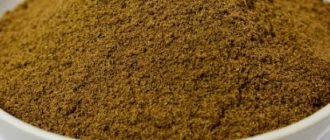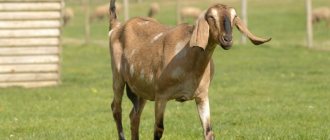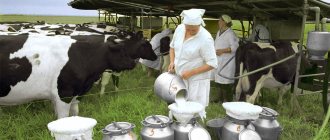Kurdyuk helps the ram endure harsh winters by replenishing its body with essential vitamins. However, not all sheep, but only some breeds, can boast of the presence of fat tail fat, and only after reaching a certain age and appropriate nutrition. It is worth noting the fact that the size of the fat tail also depends on the breed and health of the animal. Thus, the weight of a Central Asian ram's fat-tailed pouch can be up to half the weight of the animal itself, while an ordinary ram only grows a small tail.
Of course, fat tail fat is used primarily for food. For many Caucasian and Turkic peoples, lamb fat is the main ingredient in almost every dish. Moreover, it is given to small children instead of a pacifier to prevent the child from crying. Fat tail fat is an almost indispensable product for preparing many dishes. You can cook the first and second things with it, it is often included in the filling for samsa, manti, kebabs, and dough. Special lovers of fat tail fat simply fry it a little in a hot frying pan and eat it with flatbread. In addition, the product is an excellent preservative - it perfectly preserves food even in very hot times of the year. Fat can be stored in the freezer for a long time, pre-packaged in small portions.
What is fat tail?
In historical materials, the first mentions of the fat tail appeared about 3 thousand years BC. The presence of a fat tail has been found in animals depicted on dishes in Sumerian cities. Since then, the fat tail has appeared every now and then in some sources related to Asia. Also, mentions of fat tail can be found in historical information about Arab countries, Iran, Kazakhstan and even Transbaikalia.
The fat tail, or fat deposit, tends to be deposited on 3-5 vertebrae, if you count from the base of the tail. Its size directly depends on the characteristics of the breed and there are cases when the fat tail itself weighed up to 30 kg. The fat tail of a ram is approximately the same as the hump of a camel. Such fat accumulations are necessary for consumption during periods of feed shortage.
In appearance, the fat tail is a rounded surface covered with the same hair as the animal itself. In individuals of fat-tailed breeds, the most pronounced deposits appear during intensive fattening and favorable housing conditions, even despite the genetic peculiarity. Also, the development of fat tail depends on the level of salt in the soil in the place of residence and the characteristics of the grass consumed.
Harmful properties
Along with the listed advantages, lamb meat has its disadvantages:
- high calorie content. Uncontrolled consumption contributes to the development of obesity, liver and intestinal diseases, and atherosclerosis;
- the presence of bacteria in the bones that aggravate arthritis. Elderly people who are susceptible to developing the disease especially need to be careful;
Main contraindications to eating lamb:
- hypertension;
- arthritis;
- gout;
- increased stomach acidity;
- risk of developing obesity;
- stomach ulcer;
- pathologies of the liver, kidneys.
The question often arises: do lamb and cholesterol go together? Sheep meat is a healthy and valuable food product, but most of the harmful fat-like substance is contained in the fat tail of the animal. The fatty deposits near the lamb's tail contain vitamins A, B and E, which is why nutritionists often recommend dishes made from it. But with high cholesterol levels, a person must limit its consumption, otherwise he risks worsening his condition.
Fat-tailed breeds of sheep
In sheep breeding, there are only three fat-tailed varieties. These include:
- Edilbaevskys. This is the result of crossing Astrakhan rams with Kazakh sheep. Rams weigh up to 120 kg, females are almost twice as light. Coat color is red, brown and black. Black individuals produce good meat and in the greatest quantity; an explanation for this fact has not yet been found. Over the course of a year, individuals produce up to 3.5 kg of wool and about 120 liters of high-fat milk. It is good to use for making butter or cheese. Animals are unpretentious to food and living conditions. The main thing is pasture maintenance. Distribution area: Tatarstan, Kazakhstan and certain regions of the Russian Federation.
- Kalmyk sheep. They began to be actively bred in Mongolia and western China. The breed was created as a result of crossing local varieties of sheep. Such sheep can be white or black, wool yield is up to 4 kg per year. The weight of an adult ram reaches 120 kg. This breed of sheep of all fat-tailed varieties produces the highest quality products. This applies to meat, even in adults it is soft and tender, as if it were the meat of young animals. The wool is also of different quality; it is the softest of all fat-tailed breeds.
- Gissar sheep are a product of crossing Tajik and Uzbek breeds. The color is most often reddish-brown with different shades. These are the largest animals of all fat-tailed breeds; a ram can weigh up to 190 kg, a sheep - up to 90 kg. But this breed produces the least wool (about 2 kg), moreover, it is of poor quality and is not very valued. Sheep of this breed are kept exclusively for meat: it is tender and tasty, especially since there is a lot of it.
Selection of fat tail fat, storage and use
Now we’ll find out how to choose and store fat tail correctly. In oriental bazaars it is sold in huge quantities and at an affordable price. But in European markets it is quite difficult to find such a valuable product. But if you suddenly manage to find the treasured piece, it is important to pay attention to its appearance.
- Good quality fat tail has a dense structure, an even white color with pink veins and a pleasant aroma of young lamb.
- Low quality product is usually left over after cutting up old animals. Such pieces are dryish with a yellow tint and an unpleasant rancid odor.
Fat tail can be stored in the freezer for a very long time; to preserve all its beneficial properties, it is recommended to lightly add salt and seal it tightly.
It is convenient to keep tail fat, cut into portions, and use it for preparing delicious dishes and cosmetics. When removed from the freezer, it is not frozen and is immediately ready to eat.
Traditional oriental dishes are soaked in the aromatic fat of melted fat tail. Manti, pilaf meat, kebabs and roast liver always turn out juicy and appetizing thanks to fried pieces of fat tail fat.
How to prepare a delicious and delicate cream for waffle cakes - several recipes that will make your dessert unsurpassed.
Take note of the recipes of Turkish cuisine - with step-by-step tips and photographs of ready-made dishes.
The recipe for cottage cheese casserole with apples is a very tender and exquisite dessert that will decorate your holiday table.
Differences between fat-tailed sheep
Already by external signs it will be possible to easily determine whether the animal belongs to the fat-tailed breed. These features include:
- Fat-tailed sheep are always larger than ordinary ones, and the difference is obvious. It is quite natural for a fat-tailed ram to weigh up to 150 kg, for a sheep - up to 80 kg.
- The head of such animals is always narrow with a characteristic hump in the forehead and nose.
- The ears are always long and drooping.
- Horns are a rarity for fat-tailed sheep. This may even be a sign that the animal does not belong to the fat-tailed breed, or that it is not purebred. If horns are present, then only in females.
- The tail is not too long, within 10 cm. It is located in the notch that is present on the tail.
- The wool of fat-tailed sheep is always thick and coarse, often not of very good quality.
- The color of the coat can be brown, red, black or white, gray - it depends on the breed.
- Of course, the presence of the fat tail itself, which, also depending on the breed and degree of fattening, can weigh from 5 kg. There are cases when the fat tail reached a weight of 30-40 kg.
How to cook
For the first acquaintance, it is better to choose the fat tail of a young lamb, since lamb fat tail fat has a specific smell. Properly processed fat has virtually no odor and looks like cracklings. Before use, it is recommended to soak fat tail fat for several hours, preferably in cold water. In different countries they prefer to prepare this product in different ways.
For example, Adyghe people boil fat tail in boiling water, then cut the cooled product into thin slices. Serve boiled fat tail fat with bread and garlic sauce. To rid the product of a specific smell, it is marinated in spices, herbs, and wine. The fat is left for about 12 hours, then it can be easily grilled and smoked. When smoked, the product is stored slightly longer.
Gourmets prefer to dry fat tail or salt it like lard. The process of salting tail fat takes three days. It is rolled in salt, your favorite spices and sent to the refrigerator shelf under pressure. Before serving, wash the lard and cut into thin slices. Many oriental dishes are prepared using fat tail fat, one of which is pilaf.
- Food poisoning in a child - first aid. Treatment and diet for food poisoning at home
- Birch sap - homemade recipes
- Epithelium in a smear
How to melt fat tail fat
Lamb lard is melted depending on the specific dish. If you need to add a little fat to first courses or mashed potatoes, it is better to melt it in a water bath. It is worth noting that the pieces must be small, otherwise the fat will take a long time to melt. To do this, you need to finely chop it or grind it in a meat grinder. For pilaf and fried potatoes, you can melt fat tail fat directly where the dish will be prepared, for example, in a cauldron, saucepan or frying pan.
Features of fat-tailed sheep
Fat-tailed sheep are especially notable for their unpretentiousness. Moreover, this is expressed literally in everything: tolerance to any climatic conditions, undemandingness in care and nutrition. The main thing is to have the opportunity to graze on good meadows. Keeping them in dark, unventilated rooms is the only thing that such sheep cannot tolerate.
Important! The young are characterized by a rapid growth rate: by six months the animal weighs about 50 kg. From such a lamb you get 20-25 kg of tender meat and 5-7 kg of fat tail fat.
Herding fat-tailed sheep is difficult. This is due to many factors. For example, these sheep do not choose their leader, so they simply have no one to follow. Also, fat-tailed sheep have poor orientation in space: having strayed from the flock, the animal will no longer be able to return there on its own. In addition, sheep of such breeds are characterized by increased timidity and, at the slightest threat, rush in all directions.
The benefits of fat tail
Although the cholesterol content in lamb is not very low, the meat is very healthy and tasty. Fat tail contains many useful substances that have a beneficial effect on health. Due to this, it is used in cooking, medicine, and to support beauty. The benefits it brings:
- easy digestibility;
- prevention of diabetes and caries;
- it contains zinc, protein, minerals and sulfur;
- affects blood flow;
- maintains normal hormonal levels;
- Helps vitamins be easily absorbed.
Qualities are also noted - increased ability to work, improved memory, improved well-being and improved mood. Lamb fat strengthens the immune system, treats infertility in women, and normalizes potency in men. Sheep tail is an environmentally friendly product because the animal grazes in the field and eats only plant foods. It contains many substances that are beneficial for the cardiovascular system. Lamb meat is quite low in calories (only 260), so it is ideal for those on a diet.
Experts are confident that people who eat lamb are less prone to diseases caused by high levels of cholesterol in the blood.
Compound
Not all types of fat tail fat are equally healthy. The qualities depend not only on the breed of sheep, but also on the gender of the livestock.
In young sheep, fat tail fat has the following composition:
- Monounsaturated, polyunsaturated and saturated fats - 97%.
- Water - 0.3%.
- Vitamins, mainly group B, but D and E are also present, PP - 2%.
- Cholesterol belonging to the “good” type. This type of cholesterol is important for the body, as it promotes brain activity and improves cell regeneration. The cholesterol content in fat tail fat is 2 times lower than in beef and 4 times lower than in pork.
- Microelements: selenium, chlorine, phosphorus, sulfur, zinc, magnesium, iodine.
- Beta-carotene and natural lanolin. The last element makes fat tail fat the most valuable for cosmetology.
- Acids: stearic, margaric, palmitic, pentadecanoic, myristic, lauric and capric.
- Omega-6 and omega-3, which are necessary to strengthen blood vessels.
Important! The energy value of fat is 900 g, it completely lacks carbohydrates and proteins. Fat tail fat is used for cooking, but not in its pure form. Due to some features, this use of fat can harm the body.
Healthy recipes using lamb tail
What to do with a sheep's tail? A shapeless white lamb tail in the hands of a skillful housewife turns into a real oriental delicacy.
"Honey Ponytail"
| Ingredients | Quantity |
| fat tail - | 200 g |
| honey - | 1 tbsp |
| cooking water - | 1 l |
| Cooking time: 30 minutes | Calorie content per 100 grams: 897 Kcal |
The simplest recipe for frequent use, “Honey Tail,” comes from Adyghe cuisine.
Boil the fat tail in salted water until the volume is reduced by 1.5-2 times. Cut the boiled piece into thin slices, fry on both sides and brush with natural honey. This dish can be used instead of sausage and as an addition to side dishes.
It is incredibly healthy and tasty, fully satisfies the body's needs for vital components.
Rules of application
Due to its characteristics, fat tail fat can be used for the following purposes:
- Cooking food. Fat has a specific smell and taste, so it is most widely used in Asian cuisine. In order not to spoil the dish, you need fat from a young animal. It should be white, dense, and should not contain foreign particles.
- As a preservative.
- Medicine, dietetics. In pharmacology, fat tail fat is used to make ointments for varicose veins, colds, and coughs.
- Making products such as candles and soap.
- Cosmetology. The rejuvenating properties of fat tail are known. As part of creams, it tightens the skin, gives it softness and smoothness. For cosmetic purposes, you can apply melted fat to a steamed body. This fat is especially good if there are any inflammations, cracks, or wounds on the skin.
Uncontrolled consumption or use of fat tail fat for medicinal purposes may not only not help, but even harm human health. It is advisable to use this product as an adjuvant treatment, in parallel with therapy prescribed by a doctor.
The use of fat tail fat in folk medicine and methods of treatment
The medicinal properties of tail fat are widely used in folk medicine. It gives a positive therapeutic effect when used externally and internally.
Internal use is indicated for the following diseases:
- avitaminosis;
- exhaustion, loss of strength;
- hormonal disorders;
- colds.
As an external medicine, fat is used in the form of rubs, compresses, and massage products. Complex ointments are prepared from fat tail fat and used as an independent remedy.
Fat has a healing effect when:
- bronchitis, flu, pneumonia, dry cough;
- heel spur;
- joint pain;
- varicose veins.
For some diseases (for example, the respiratory system), internal and external administration of fat tail fat should be combined.
Colds, prolonged dry cough
In such cases, rubbing helps a lot. For this purpose, the fat is slightly melted, rubbed on the patient’s chest, back in the chest area, and the rubbed areas are covered with a warm cloth (instead of rubbing, you can put a fat compress on the chest). This procedure is best done before bedtime.
To enhance the effect, the patient should definitely take a glass of warm milk mixed with a tablespoon of fat. To improve the taste, you can add 1 tsp. honey Fat does not cause allergic reactions, provides deep heating, improves blood circulation, and removes toxins and phlegm.
Heel spur
To treat this disease, you should prepare a mixture: add 100 g of vinegar essence and fat to a raw egg, crushed together with the shell. Stir and leave for one day. Compresses are made from the finished composition on the sore spot until complete recovery.
Phlebeurysm
With this disease, thin slices of fat tail are applied to the painful areas, secured with a bandage for convenience. Change the bandage once a day. The treatment is long-term, but after a month there is a significant improvement in the condition.
Joint pain
Relief occurs by applying warm compresses of melted lard at night. To do this, a cloth soaked in warm fat is applied to the sore joint, covered with wax paper or plastic wrap and wrapped warmly.
Medicinal properties
Fat has a lot of medicinal and preventive properties:
- Relieving nervous tension, calming effect on the nervous system. It also normalizes sleep, relieves anxiety and stress. This is due to the high content of vitamin B.
- Increased physical activity due to high energy value. Recommended for severe depletion of the body and even dystrophy.
- Improving metabolic processes, normalizing fat metabolism.
- Increasing the body's immune forces.
- Stimulates the activity of the brain and digestive system.
- Positive effect on the organs of vision.
- Skin regeneration.
- Thanks to antioxidant activity, cell membranes are strengthened.
- If you consume small amounts of fat tail fat from a very early age, you can successfully prevent age-related joint diseases.
- External use is recommended for cracked skin and excessive dryness. Prescribed for cracked nipples during lactation in women. Fat is effective for fungal skin infections.
Composition, nutritional value of lamb
Most of the beneficial substances are contained in muscle tissue and connective fibers. In terms of the amount of protein, amino acids, and mineral elements, this meat is not inferior to beef. In terms of calorie content, it is significantly ahead of it: beef contains 1840 kcal/kg, lamb – 2255 kcal/kg.
Cholesterol is also present in lamb
The meat of young sheep (up to 2 years old) is especially valued. It is rich in nutrients: fluorine, potassium, sodium, calcium, magnesium, iodine, phosphorus, iron, vitamins B1, B2, B12, E, PP, which have a positive effect on the body:
- Potassium, magnesium, sodium salts. Strengthen the heart and blood vessels, restore water and acid-base balance.
- Fluoride is essential for dental health.
- A large amount of iron has a beneficial effect on the composition of the blood and the functioning of the hematopoietic organs. Lamb is especially useful for increasing hemoglobin during heavy periods, anemia, after injuries, and operations with blood loss.
- Iodine supports normal thyroid function.
- A large amount of folic acid is necessary for growth, development of the immune and circulatory systems.
- Zinc affects the production of insulin and other hormones;
- Sulfur is necessary for protein synthesis and is part of amino acids;
- Lecithin stimulates the pancreas, removes excess cholesterol, prevents the development of atherosclerosis, and normalizes fat metabolism.
- Omega 3 and Omega 6 fatty acids promote the production of hormones, form cell membranes, inhibit degenerative processes, and prevent the development of atherosclerosis.
Such acids are not produced by the body. Lamb meat can serve as their constant source.
Product benefits
Let's consider the main benefits of such fat:
- For women. Moderate consumption of fat tail fat helps normalize hormonal levels and increase fertility. Such fat is useful during menopause. Its use in food and during breastfeeding is no less useful. This fat is good for general rejuvenation of the body; it is even used as a prevention of cancer.
- For children. The calming effect of fat tail fat is known; it is also given to strengthen the immune system. But up to 9 months, any use of fat tail for children is strictly prohibited. Fat is often used on children in the form of compresses for respiratory diseases.
- For men. Since ancient times, fat tail fat has been famous for its ability to improve potency in men. In addition, its positive effect on male reproductive function is known. Fat is used in the treatment of prostatitis. In order to reduce blood cholesterol levels, it is recommended to include fat tail fat in your daily diet. It also contributes to the normal functioning of the gastrointestinal tract, replenishes energy consumption, and improves memory. Fat promotes concentration, improves blood flow to the brain and vision.
- During pregnancy and lactation. Daily use of a small amount of fat tail fat improves immunity, which is important for pregnant women. Fat components reduce irritability during this period and increase the level of physical activity. But during lactation it is better to avoid fat tail fat. This product can harm a small child, which manifests itself in indigestion in the baby, colic.
Adviсe
- To prepare a dish or use the product as an additive, it is better to use the fat tail of a young sheep . It has a solid structure of white or slightly yellowish color, without meat inclusions, with an unobtrusive lamb smell. After melting, the fat becomes transparent, without sediment.
- To make a cough compress, lamb fat must be melted and gauze or soft cloth folded in several layers should be soaked in it. Then put the compress on the lungs or back, cover with a towel to warm up.
- Another type of compress is done for wen, when other methods have not helped. In this case, the product is applied warm to the affected area and covered with a bandage. Remove after the product has completely cooled.
- To get rid of a dry cough, you can use fat tail fat internally. To do this, add one tablespoon of the product to warm milk and let it dissolve. This combination may not appeal to everyone, but the result will not be long in coming.
Contraindications
Here are the cases in which this product should not be used:
- Fat tail fat is high in calories, so it is contraindicated for people who are overweight.
- The presence of cholesterol in the product contributes to the formation of cholesterol plaques, which leads to blockage of blood vessels. This is dangerous for people with cardiovascular diseases.
- Stomach diseases are also a contraindication for consuming fat tail fat. Such diseases include gastritis, colitis, ulcers, and high acidity.
- Atherosclerosis, pathological changes in the liver or gallbladder, disturbances in the outflow of bile.
- Allergic reactions.
Methods of application
Images of fat-tailed sheep have been found on kitchen utensils and mosaics of ancient Sumerian cities as early as 3000 BC. e. Kurdyuk was mentioned in the Bible as an object of sacrifice. Fat tail fat does not solidify at room temperature; it is used to prepare many oriental dishes. It is also used to make soap and prepare some types of sweets and tea.
Pieces of fat tail skin, pre-fried, are served as an appetizer before the main course. This type of fat is used to store meat in hot conditions due to the lack of refrigeration equipment. Modern medicine has a negative attitude towards fat tail fat; the main argument against it is the presence of cholesterol in its composition.
Traditional medicine stands in contrast to it. Our grandmothers also used fat tail to treat many diseases, including colds. Lamb fat is used to treat respiratory diseases such as bronchitis, tracheitis and bronchopneumonia. In addition, they treat baldness, burns, and weakened potency. With the help of such a folk remedy as fat tail fat with vinegar essence, plantar warts are removed. In cosmetology, this type of fat is used to prepare anti-aging creams and ointments, because fat tail fat contains natural lanolin.
Types of fat
Fat tail fat is classified by grade. The further use of the product depends on them:
- Highest grade - this product is obtained from the best raw materials, that is, fat tail fat from young animals and internal lard. Even at first glance, this product is very different in its snow-white hue and increased density (if you press it with your finger, only a small dent remains). It also differs in the specific smell inherent in young lamb. If such fat is melted, a completely transparent liquid is obtained.
- The first grade is almost completely identical to the highest, with the exception of color. This variety has a grayish or greenish tint. The smell is allowed to be a little rich.
- The second type of fat is made from not very high-quality raw materials. When melted, such fat will be slightly cloudy.
How to salt fat tail
- Time: 4 days.
- Number of servings: 20 persons.
- Calorie content of the dish: 829 kcal per 100 grams.
- Purpose: for a snack.
- Cuisine: oriental.
- Difficulty: easy.
In taste and appearance, salted lamb tail resembles the more familiar lard. Still, there are some differences in the taste and aroma of the dish. The composition of the spicy mixture for pickling is allowed to be very diverse, based on your culinary preferences. Salted fat tail fat is a high-calorie food product, so it is best to consume it in the first half of the day. The fat tail is served with bread as an appetizer.
Ingredients:
- lamb tail – 1 kg;
- salt – 75 g;
- spicy herbs – 25 g;
- curry – 3 g;
- ground black pepper – 3 g;
- garlic - 1 head.
Cooking method:
- If the fat is frozen, defrost it. Rinse the raw materials under cold water and dry.
- Cut the lamb fat into several pieces. If you prefer salting in large pieces, then pierce the whole fat tail with a wide knife so that it is well salted inside.
- Mix all spices thoroughly.
- Roll the tail fat in the spice mixture.
- Place the workpiece on the bottom of a glass or plastic container, wrap it with cling film or foil.
- Place on the refrigerator shelf for 3-4 days.
- Before serving, be sure to remove excess salt and spices from the lard.
- The product should be stored in a cool place.
How to eat?
In the East, fat tail fat has long been used in cooking. It is prepared not only as appetizers, but also as main courses. Nutritionists assure that lamb fat still has more beneficial properties than harm. The benefit, as a food product, lies in the huge amount of acids useful for humans: lauric, butyric, caprylic, palmitic, stearic. They promote cholesterol synthesis, improve the functioning of internal organs and make the skin elastic.
There is cholesterol in lamb, but the meat is still healthy. To make it delicious, come up with recipes that will not leave anyone indifferent. For example, pilaf cooked in fat tail fat. Only young animals are used for it. Thanks to this, there is no soot or smoke, and the aroma is rich. The taste is indescribable. This dish contains little cholesterol, so it will not harm you. On the contrary, it will have a positive effect on the pancreas, male reproductive system, brain stimulation, heart function and gastrointestinal tract. In dried form, such fat replenishes strength and is the key to health.
Contraindications and harm
If cholesterol is high, then experts do not recommend not consuming lamb fat or eating it in limited doses. It can only cause harm to people with cardiovascular diseases, pathologies of the gastrointestinal tract, kidneys and liver. And for allergy sufferers, it can cause an allergy attack. Therefore, here are a few contraindications to eating sheep tail:
- Excess weight. Uncontrolled use of fat tail fat leads to increased body weight.
- Arthritis and gout. This lard can only aggravate such diseases.
- Chronic gastrointestinal diseases. Meat increases acidity and complicates the digestive process.
- Atherosclerosis, ulcer, hypertension. Even low cholesterol levels can be harmful in such diseases.
If there is a malfunction in digestion, metabolism or increased acidity, it is better to completely avoid lamb fat.
To reduce the harm that is in meat, it should be consumed in two forms - stewed and boiled. You should eat lamb or lamb tail in small portions and add a lot of herbs and vegetables to the dish. Pieces of lamb with high or very high cholesterol should be lean and without skin. If the product is prepared correctly, it will help normalize the functioning of the stomach and will be a preventive measure for most diseases.
A distinctive feature of the fat-tailed breed of sheep is a large fat deposit, which is located in the sacral part. This natural accumulation of fat is called fat tail and can be of both large and small sizes. Among eastern peoples, fat tail is a source of fat tail fat, which is used in cooking, medicine, and cosmetology. What are its beneficial and harmful properties?
How to eat?
In the East, fat tail fat has long been used in cooking. It is prepared not only as appetizers, but also as main courses. Nutritionists assure that lamb fat still has more beneficial properties than harm. The benefit, as a food product, lies in the huge amount of acids useful for humans: lauric, butyric, caprylic, palmitic, stearic. They promote cholesterol synthesis, improve the functioning of internal organs and make the skin elastic.
There is cholesterol in lamb, but the meat is still healthy. To make it delicious, come up with recipes that will not leave anyone indifferent. For example, pilaf cooked in fat tail fat. Only young animals are used for it. Thanks to this, there is no soot or smoke, and the aroma is rich. The taste is indescribable. This dish contains little cholesterol, so it will not harm you. On the contrary, it will have a positive effect on the pancreas, male reproductive system, brain stimulation, heart function and gastrointestinal tract. In dried form, such fat replenishes strength and is the key to health.
Contraindications and harm
If cholesterol is high, then experts do not recommend not consuming lamb fat or eating it in limited doses. It can only cause harm to people with cardiovascular diseases, pathologies of the gastrointestinal tract, kidneys and liver. And for allergy sufferers, it can cause an allergy attack. Therefore, here are a few contraindications to eating sheep tail:
- Excess weight. Uncontrolled use of fat tail fat leads to increased body weight.
- Arthritis and gout. This lard can only aggravate such diseases.
- Chronic gastrointestinal diseases. Meat increases acidity and complicates the digestive process.
- Atherosclerosis, ulcer, hypertension. Even low cholesterol levels can be harmful in such diseases.
If there is a malfunction in digestion, metabolism or increased acidity, it is better to completely avoid lamb fat.
To reduce the harm that is in meat, it should be consumed in two forms - stewed and boiled. You should eat lamb or lamb tail in small portions and add a lot of herbs and vegetables to the dish. Pieces of lamb with high or very high cholesterol should be lean and without skin. If the product is prepared correctly, it will help normalize the functioning of the stomach and will be a preventive measure for most diseases.
source
The benefits of fat tail
Although the cholesterol content in lamb is not very low, the meat is very healthy and tasty. Fat tail contains many useful substances that have a beneficial effect on health. Due to this, it is used in cooking, medicine, and to support beauty. The benefits it brings:
- easy digestibility;
- prevention of diabetes and caries;
- it contains zinc, protein, minerals and sulfur;
- affects blood flow;
- maintains normal hormonal levels;
- Helps vitamins be easily absorbed.
Qualities are also noted - increased ability to work, improved memory, improved well-being and improved mood. Lamb fat strengthens the immune system, treats infertility in women, and normalizes potency in men. Sheep tail is an environmentally friendly product because the animal grazes in the field and eats only plant foods. It contains many substances that are beneficial for the cardiovascular system. Lamb meat is quite low in calories (only 260), so it is ideal for those on a diet.
Experts are confident that people who eat lamb are less prone to diseases caused by high levels of cholesterol in the blood.
